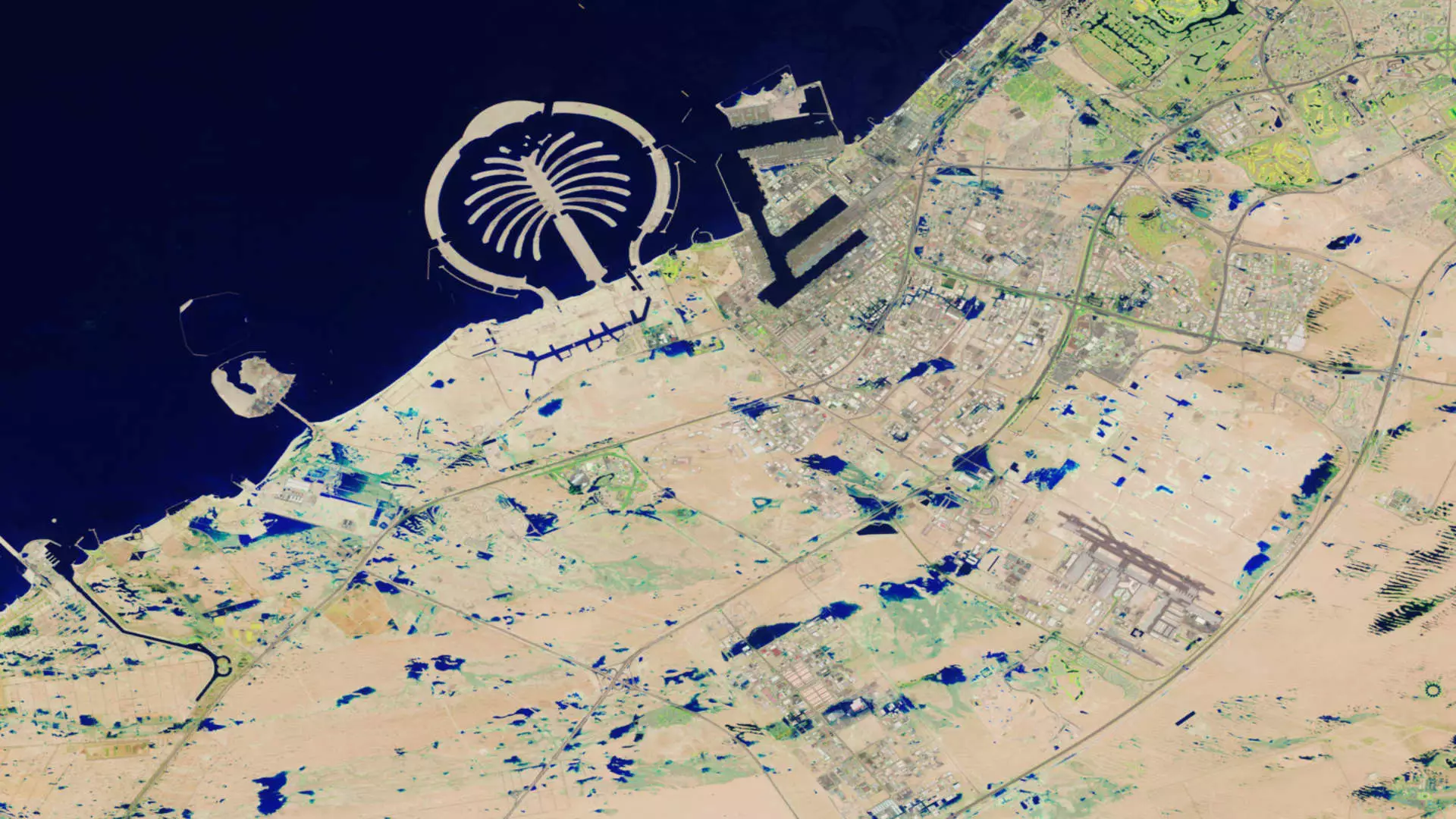NASA recently shared shocking images of Dubai and Abu Dhabi before and after the United Arab Emirates experienced a historic deluge. The rainfall led to severe floods that paralyzed the country and left a trail of destruction in its wake. These images, captured by NASA Earth Observatory using Landsat data from the U.S. Geological Survey, revealed a drastic transformation of the desert and urban landscape in the UAE. What was once dry land now resembled vast bodies of water, giving the impression of small lakes scattered across the region.
As the storm hit on April 16, flash floods submerged cars, leaving hundreds of drivers stranded and forced to abandon their vehicles to escape the rising waters. This calamity unfolded amidst a torrential downpour that brought a year’s worth of rain in just a single day, a record-breaking event in the history of the UAE. The situation was dire, with schools and businesses closing, flights being grounded, and widespread damage to property, including cars and buildings across the affected areas. The disruption to daily life was profound, as residents grappled with power outages, lack of running water, and being trapped in homes, airports, and other locations as the storm wreaked havoc.
The UAE’s National Center for Meteorology reported staggering amounts of rainfall, with some regions receiving up to 250 millimeters in less than 24 hours. This extreme weather event was exacerbated by the lack of adequate drainage infrastructure and extensive paving over urban spaces that prevented water from dissipating, leading to widespread flooding. The aftermath of the storm left significant damage to the country’s infrastructure, with many residents still grappling with the lack of basic utilities like water and electricity.
Despite the challenges, the UAE has mobilized cleanup efforts to address the aftermath of the floods. However, significant issues persist, particularly in areas where infrastructure has been severely compromised. One striking example is a multi-story apartment building near the border of Dubai and Sharjah, which sustained structural damage and is at risk of collapsing. The evacuation of the building underscores the serious repercussions of the storm and highlights the urgent need for comprehensive recovery measures in the affected regions.
In response to the crisis, the UAE’s central bank has taken action by directing local banks and insurance companies to offer loan repayment deferrals for six months. This initiative aims to provide relief to individuals and businesses impacted by the floods, offering a lifeline to those grappling with the financial fallout of the disaster. The road to recovery will be a long and arduous one, requiring concerted efforts from government agencies, corporations, and community members to rebuild what was lost and support those affected by this unprecedented natural disaster.
As the UAE continues to grapple with the aftermath of record rainfall and devastating floods, the resilience and solidarity of its people will be crucial in overcoming this crisis. The challenges ahead are immense, but with a coordinated and compassionate response, the country can emerge stronger and more prepared to face future environmental challenges.

